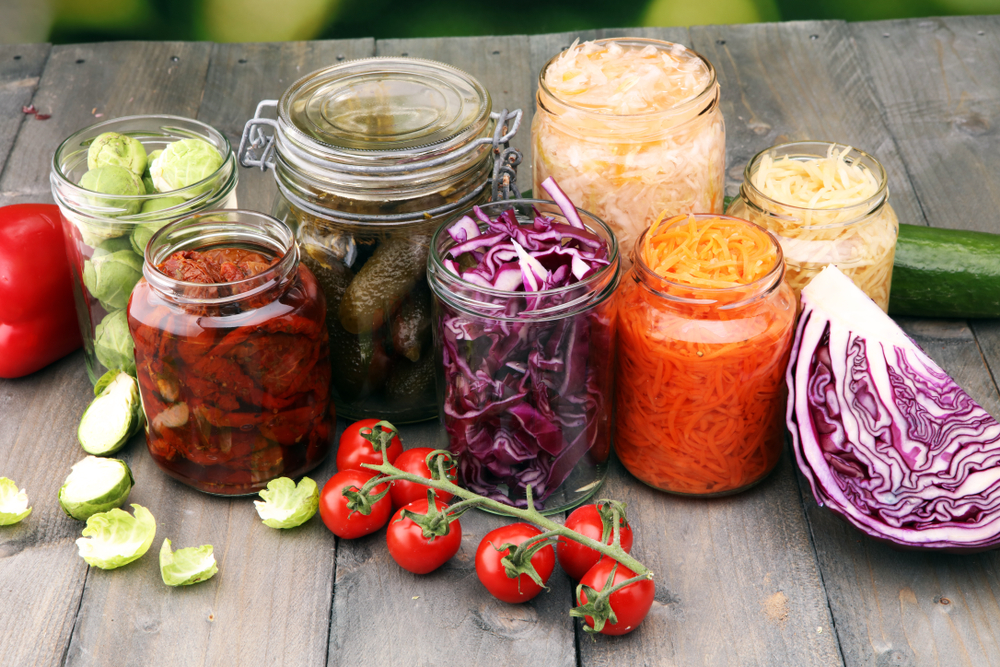The study of the part of the human body called the gut microbiome is still in its infancy. Twenty years ago not much was known about the environment deep down in the intestines. It is now one of the hottest research topics in health and nutrition, but public awareness of the importance of a healthy gut microbiome still lags behind. I myself hadn’t heard of it 4-5 years ago. Now that I know more I realise that a healthy gut is one of the keys to a healthy body and mind. Before we take a look at how our diet affects gut microbiome function, and therefore our health, we need to define what it is and how it works (or doesn’t!).
The gut microbiome
The gut microbiome is the term describing the environment of microbes in the colon and it has been described as The Organ We Didn‘t Know We Had.
We know that there are different types of microbes (bacteria, yeasts, viruses, parasites, and archaea), which perform different functions. Let’s take a look at some of the key info:
- Our bodies contain 100 trillion microbes.
- There are more microbes on one person’s hand than there are people on the planet.
- Less than 5% of microbes can cause disease.
I am going to focus on the bacteria, specifically the variety of bacteria types and the effect that their distribution has on our gut health and then our overall health. Here is a brief overview of the facts:
- There are up to 37 trillion bacteria in the human gut, which can weigh up to 2kg.
- There are 100 billion bacteria to every gram of intestinal content.
- Analysis of the bacteria in our gut can predict obesity with an accuracy of over 90%.
- Bacteria may influence our behaviour via the 100 million neurons in the gut. This is why the gut has also been called our 2nd brain.
- There are good and bad bacteria; 1,000s of different types of each.
The distribution of good and bad bacteria is not only determined by our genetics, but also by our diets. The bacteria in our gut thrive on the food that we eat. If we eat healthful foods the good bacteria thrive and if we eat junk foods the bad bacteria flourish. This can affect our cravings – a gut full of bad bacteria fed on junk food will be crying out for more junk food!
How the gut microbiome is damaged by an unhealthy diet

The dominance of bad bacteria in the gut is known as dysbiosis and can negatively impact multiple health conditions such as:
- Obesity
- Type II diabetes
- Coronary artery disease
- Hyperlipidaemia (high blood fat)
- Nonalcoholic fatty liver disease
- Several cancers
Dysbiosis is a loss of harmony and balance within the gut leading to a loss of microbial diversity, which results in a higher proportion of inflammatory microbes emerging. With less good microbes and more bad ones the tight junctions in the gut wall become damaged, causing intestinal permeability, or leaky gut, which results in the spillage of bacterial endotoxins into the bloodstream. These endotoxins are transported all around the body and cause chronic inflammation everywhere. I am planning a future blog that will cover the problems with chronic inflammation.
The Standard Western Diet (the food that most people commonly eat in this country) promotes dysbiosis. Here are some specific examples:
- Sugars and highly refined carbs cause a dramatic loss in gut microbial diversity and a rise in inflammatory bacteria. The same goes for chemical preservatives, additives, and colourants.
- Artificial sweeteners have to be better for you than sugar, right? Wrong! They can induce changes in the gut microbiome that promote inflammation, insulin resistance and liver injury.
- Unhealthy fats (hydrogenated and trans fats) promote higher systemic inflammation. Look out for these in crisps, baked goods, fried food, biscuits, non-dairy creamer, and margarine. Saturated fats found in animal products and coconut oil can also cause dysbiosis and gut membrane leakage.
- Animal proteins (meat) contain high levels of L-carnitine and cholines, which are transformed into a substance called trimethylamine N-oxide or TMAO. This increases risk of heart disease, stroke, Alzheimer’s, type 2D, chronic kidney disease and others. Unhealthy foods produce unhealthy compounds, but this vicious cycle can be broken by eating plant foods which promote gut biota that can’t produce TMAOs.
Foods that promote a healthy gut microbiome

We should focus on 3 areas of diet to promote gut health; increasing dietary fibre, eating fermented foods, and eating a wide diversity of plant foods.
Fibre:
- The healthy bacteria feed on fibre – they love it! Eating fibre-rich foods will make them grow and replicate.
- They break this fibre down through fermentation to produce substances called short-chain fatty acids (SCFAs).
- Here’s just one example of how SCFAs can be a powerful weapon in the weight loss fight:
- After a fibre-rich meal SCFAs turn on satiety hormones that signal to the body that we have had enough to eat.
- They also help to control blood sugar levels.
Fermented foods:
- Fermented foods like kimchi, sauerkraut, and kombucha are all the rage in supermarkets across the country because they contain probiotic bacteria.
- Fermented foods are not new however; human beings have been fermenting foods like cheese, bread, yoghurt, and wine for thousands of years.
- There are many versions of fermented foods that don’t actually contain probiotics because they have been pasteurised for long shelf life. Choose foods containing the terms, “raw”, “unpasteurised”, “live cultures” and look for them in the chiller section.
- Fermented foods don’t stay in the gut for long so they have to be eaten regularly (several times a week) to pass on their probiotic bacteria.
Plant food diversity:
- The American Gut Project analysed the diets of 11,000 volunteers and measured their gut health.
- They found that the number one predictor of a healthy gut microbiome is the diversity of plants in the diet.
- Participants who ate more than 30 different plants per week had unique fibre-loving bacteria that weren’t found in people with a plant-deprived diet.
“The greatest predictor of a healthy gut microbiome is the diversity of plants in one’s diet” according to Dr. Rob Knight, Director of the American Gut Project.
In my next blog I will come back to the issue of plant food diversity in the diet and look at how different coloured plant foods contain different beneficial nutrients.





